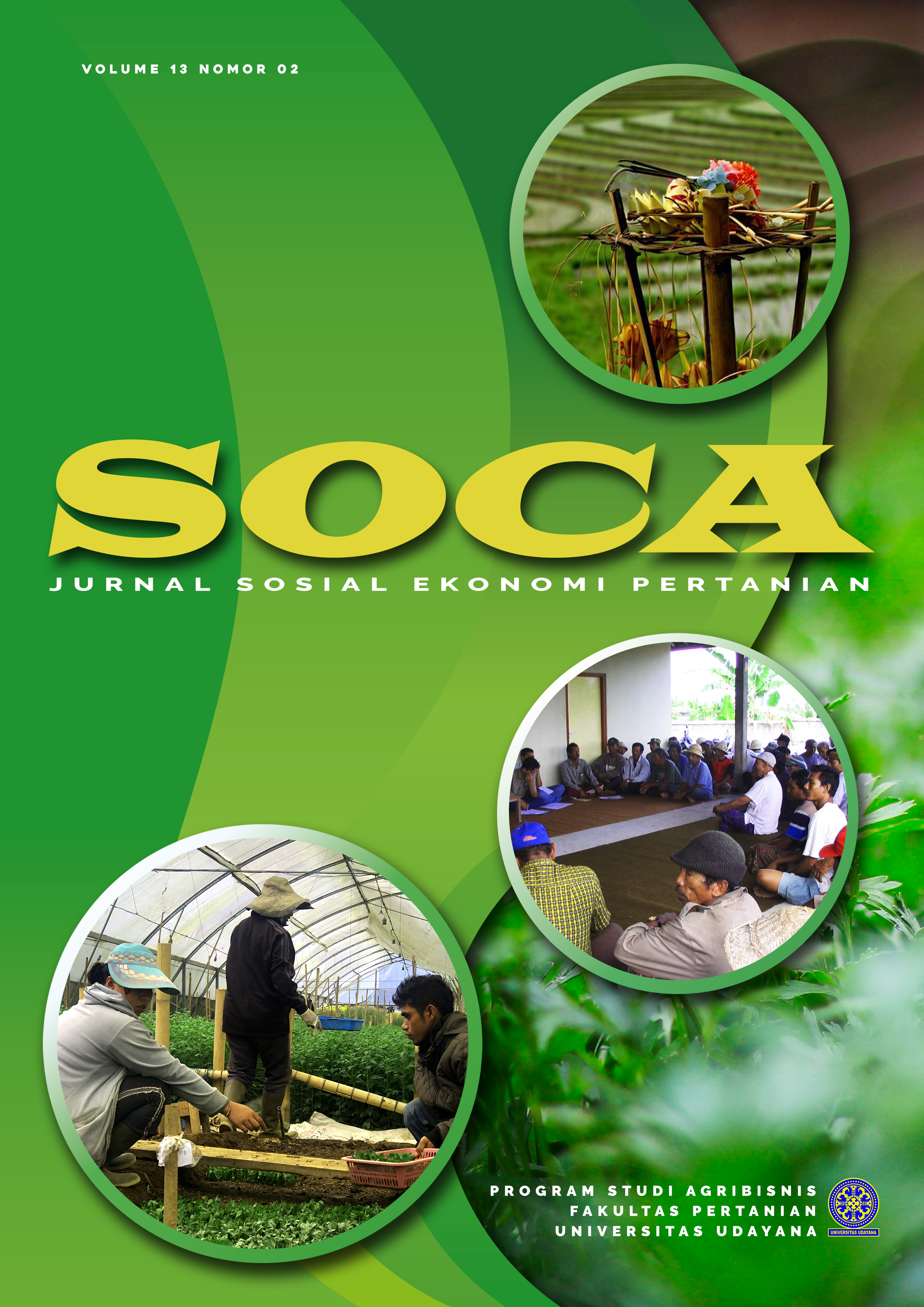DETERMINAN KEPUASAN BELANJA KONSUMEN SAYUR ONLINE
COSTUMER SATISFACION
Abstract
This study aims to: find determinants of vegetable consumer satisfaction (online) including trust, product appearance (product packaging), product quality, website quality, information content, product diversity, and ease of transaction. The research was conducted in April 2018 until June 2018, for approximately 60 days. Whereas the research site is in the Salatiga area of ??Central Java, Semarang Regency. This research is a kind of quantitative descriptive research and the method used in this study is the survey method. The sampling technique used in sampling is non probality sampling by accidential sampling. Quantitative descriptive data analysis with simple linear regression analysis. The results of the analysis show that the product appearance variable (product packaging), product quality, website quality, information content, diversity and ease of transactions are very influential or significant towards satisfaction, while the trust variable does not affect satisfaction, because there are factors that influence satisfaction, namely crosstab results the value has the same is not high and not low, so that the population collects or does not spread and there is a fairly high multicollinearity.
Downloads
References
Levin, I., P. dan Gaeth, G. J. (1988). How Consumers Are Affected by the Framing of Attribute Information Before and After Consuming the Product. Journal of Consumer Research. 15, 374-378.
Ribbink, Dina, Allard C. R. van Riel Veronica Liljander, dan Sandra Streukens. (2004) Comfort Your Online Customer: Quality, Trust, and Loyalty on The Internet, Managing Service Quality Journal, Vol. 14: 446 – 456.
Assael, H. (1998). Customer Behavior and Marketing Action. Ohio: SouthWestern College Publishing.
Artikel Jurnal Online
N. Zeane, “Dampak Kehadiran Internet,” Dampak Kehadiran Internet, (2009). [Online]. Available: http://zea-mpr.com/2009/11/dampak-kehadiran-internetdalam.html.
Shohibullana, I. H. (2014). Kontrol Diri Dan Perilaku Konsumtif Pada Siswa SMA
(Ditinjau dari lokasi sekolah). Jurnal Online Psikologi.
Buku
Risnita. (2012). Pengembangan Skala Model Likert. Edu-Bio, 3, pp.86-99.
Rofiq, Ainur. (2007). Pengaruh Dimensi Kepercayaan (Trust) Terhadap Partisipasi Pelanggan E-Commerce (Studi Pada Pelanggan E-Commerce Di Indonesia). Universitas Brawijaya.
Sidharta, Iwan & Suzanto, B. (2015). Pengaruh Kepuasan Transaksi Online Shopping Dan Kepercayaan Konsumen Terhadap Sikap Serta Perilaku Konsumen Pada ECommerce. STMIK Mardira Indonesia, Bandung.
Siregar, S. (2014). Statisti Parametrik untuk Penelitian Kuantitatif Dilengkapi dengan Perhitungan Manual dan Aplikasi SPSS Versi 17. Jakarta; Bumi Aksara.
Sugiyono. (2008). Statistika untuk Penelitian. Bandung: Alfabeta.Suki, Norazah. (2011). A structural modelo
Sumartono. (2002). Terperangkap Dalam Iklan. Bandung: Alfabeta.
David, l. Loudo dan Albert J. Della Bitta. 1998. Consumer Behavior: Third Edition, New York. Mc Graw Hill Book Company,1998.
Engel, James. F. Roger D. Blackwell dan Paul W. Miniard. (2003). Consumer Behavior. 11th
Edition. The Dryden Press, Orlando.
Purwanto, Erwan Agus, Dyah R. Sulistyastuti. .2011. Metode Penelitian Kuantitatif. Yogyakarta: Gava Media.
Risnita. (2012). Pengembangan Skala Model Likert. Edu-Bio, 3, pp.86-99.
Saragih, B. (2010). Agribisnis Paradigma Baru Pembangunan Ekonomi Berbasis Pertanian. IPB Press.Bogor
Supranto, J. (2006). Pengukuran Tingkat Kepuasan Pelanggan: Untuk Menaikkan Pangsa Pasar. Rineka Cipta.Jakarta
BPS. (2015). Perkembangan Beberapa Agregat Pendapatan dan Pendapatan per Kapita Atas Dasar Harga Berlaku Tahun 2010-2014. Badan Pusat Statistik. Jakarta
N. M. S. Anggraeni and N. N. K. Yasa, “E-Service Quality terhadap Kepuasan dan Loyalitas Pelanggan dalam Penggunaan Internet Banking,” vol. 16, no. 2, pp. 293–306, (2012)
J. Fernando, T. D. Desyana, and A. Christian, “Pengaruh loyalitas Pelanggan Terhadap Berbelanja Secara Online,” Bina Nusant., (2014).
F. D. Davis, “Perceived usefulness, perceived ease of use, and user acceptance of information technology,” Soc. Inf. Manag. Manag. Inf. Syst. Res. Cent. Univ. Minn., pp. 319–340, (1989).













